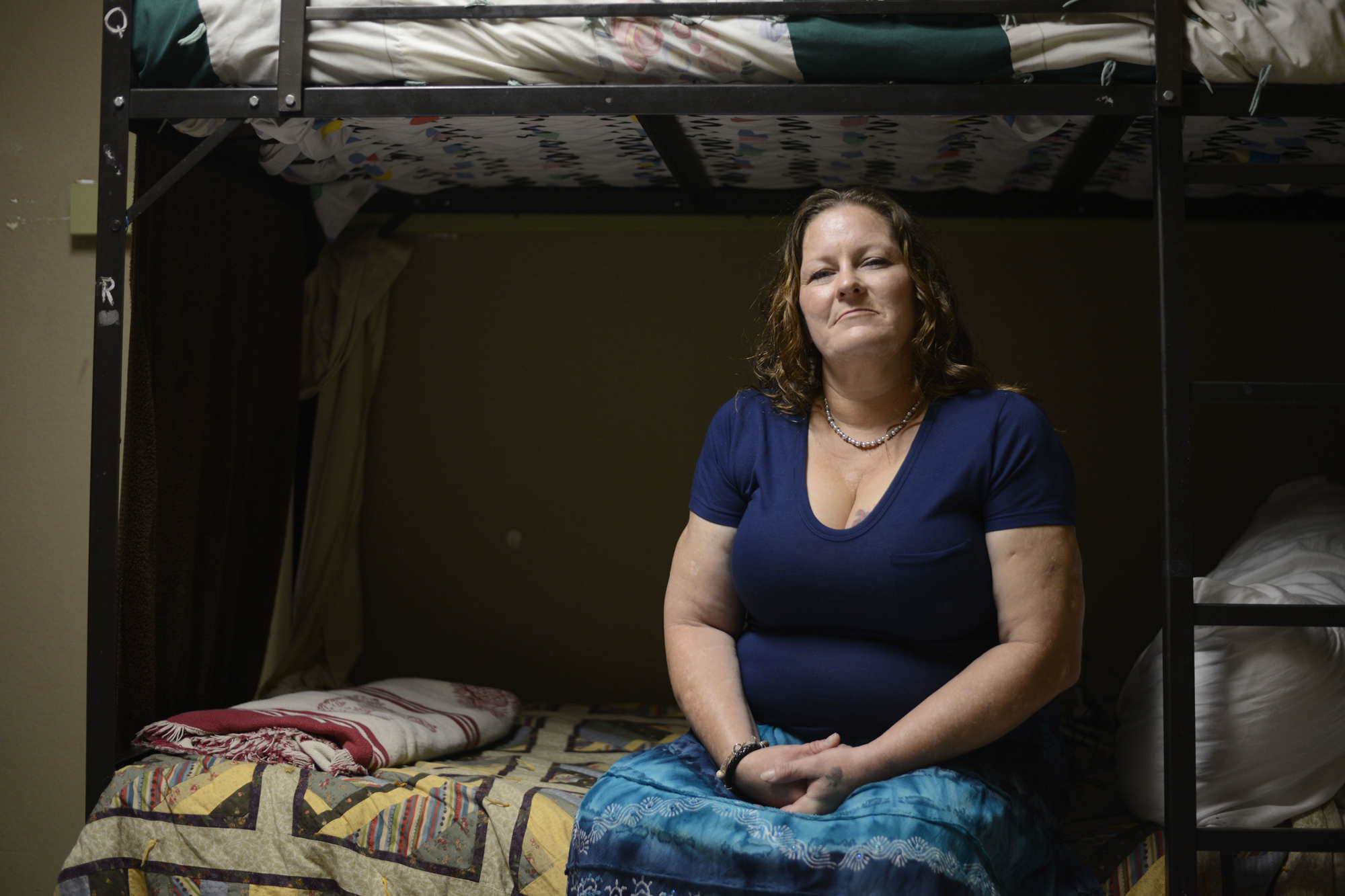Editor’s Note: This article is adapted from a Facebook post.
Ten years ago, before the Affordable Care Act was passed, I became a 26-year-old widow with a 2-year-old child.
I want to tell you about how health insurance changes lives—how it can save them, and what is lost when it fails.
My late husband Bob and I met when I was only 13. Bob was a wise old man of 15. Everyone liked him—he was the kind of person who made other people feel good about the world and about themselves. I liked him right away, and we started dating after he asked me to go to a dance. We were the rare high school sweethearts who maintained a relationship through college, even though Bob was two years ahead of me in school.
Get TalkPoverty In Your Inbox
Bob was a musician and an educator. He earned a Master’s degree in music, and performed in St. Louis and towns all over the Midwest. His income from those gigs was a very significant part of our household budget. He taught at jazz camps for kids, and as an adjunct faculty at various local colleges. Bob loved teaching. A lot of people teach because it’s a reliable source of income to support their passion for performance, but Bob taught because he loved being with students. He was incredibly methodical and organized in his approach to teaching. Many of his friends and former students are still teaching music today using his methods and materials at various institutions in and around my hometown of St. Louis.
Bob was also a gifted composer, because he had worked hard to learn theory and technique until they obeyed the commands of his heart. He spoke the language of music far more eloquently than most of us ever speak with words. I didn’t recognize Bob’s gift when he was living as well as I do now. After he released a CD in 2004, the American Society of Composers, Authors and Publishers (ASCAP) selected him to receive a Young Jazz Composer’s Award for one of his songs, “Nola’s Waltz.” As my own musical understanding grows, I hear more and more of what he had to say and how beautifully he told his stories.
He was certainly living the dream in those years—from 1997, when his musical career started, until 2007, when it abruptly came to an end.
What happened?
When he was 25, Bob started having stomach aches. We were married, expecting a child, and working ten jobs between the two of us. I had three jobs and was a full-time student, and Bob taught at six different places in addition to his performance gigs. None of these jobs had paid sick days, so when Bob had stomach pains, he just went to work anyway.
Health insurance was always a problem for us. We purchased it through our college when we were students, but when Bob graduated and we tried to find our own insurance most companies rejected us because Bob was overweight and had a pre-existing condition: he had taken medication for acne when he was in high school. We were able to purchase a catastrophic insurance policy, but it had a deductible of $5,000 and cost us a little less than that each year in premiums.
About 20 percent of our income at that time was going toward medical expenses. We were racking up debt, and paying quite a bit of interest on it. In hindsight, we probably restricted our access to care. Just paying the premiums was enough of a financial burden—we did not want to add to it with copays.
Bob’s stomach aches got gradually worse over time, until he finally went to the ER. We both thought he was having a heart attack, because he was so sweaty and clammy and in so much pain. He was diagnosed with gallbladder problems, and we were relieved that it wasn’t something worse.
In a follow-up visit to the doctor, Bob was told that he didn’t have to do anything until the pain was bad enough to warrant having his gallbladder removed. So Bob muscled his way through the attacks, even when they were so bad that he was literally crawling in pain. It was very frustrating for me as his wife. I was angry with him because he refused to go to the doctor and get his surgery to get that gallbladder out.
Starting in the 2006-2007 school year, Bob was hired as a full-time faculty member of Southwestern Illinois College (SWIC). We had employer-based health coverage for the first time, and he was not about to risk losing that right when we got it by calling in sick for a few weeks. He was determined to stick it out until the end of that school year to do the right thing for his job—and his wife and son.
On March 22, 2007, Bob called me at home and told me that he was having an attack at work and that I needed to come get him and take him to the hospital. I drove him to the ER with our 2-year-old in tow, and the three of us spent the entire night in a hallway in the hospital basement. Bob was delirious from pain and sedation. He had acute pancreatitis, which was caused by a gallstone that had escaped his gallbladder and lodged itself in his pancreas.
Bob spent three weeks in the ICU at that hospital, was airlifted to a bigger hospital, and spent another three weeks in the ICU there. His last words to me were all confusion about why he was in the hospital and why no one would let him go home. He just wanted to see his son.
In the middle of the night on May 3, a nurse called to tell me that Bob had taken a turn for the worse. I called his friends and family, and we sat vigil for him in the waiting room. There were probably 30 of us there when a nurse told me he was the sickest person in the hospital.
His death came at the end of a desperate, gory fight to save him. If you’ve never watched someone die of sepsis, I hope you stay that way.
Bob’s funeral was attended by at least 600 people. It was beautiful. People came together to express their grief by supporting his family. I was amazed at how caring people can be. I also barely remember it, because I slept so little in those days. Bob’s death left me adrift as a 26-year-old widow and single mother with few job prospects. I was still in the middle of my own education when he died.
Things worked out far better for me than they do for most people in my position, thanks to Bob’s life insurance, health insurance, and Social Security. Since Bob was covered by his employer’s health insurance, the medical bills that packed my mailbox for months after his death—I lost track of the total after it topped a quarter of a million dollars—were covered. They didn’t force me into bankruptcy, so I was able to rebuild our life. I spent countless nights grieving alone and struggling to work around the hole in my heart, and I spent my days going to school and raising our son, Bobby. I earned a Master’s Degree in Art Therapy Counseling, and provided more than 1,400 hours of services to others as part of earning that degree. I remarried in 2011.
It all could have gone very differently if the laws in our country had been on a slightly different timeline. If the ACA had passed in 2004 instead of 2009, Bob and I would have had coverage we weren’t afraid to use. Bob would have been covered by his parents’ insurance until only two months before his employer-based coverage began. He could’ve had his gallbladder taken out months before it killed him.
If the ACA is repealed—if we no longer prevent insurance companies from excluding people based on pre-existing conditions like teenage acne, or no longer require insurance companies to cover young adults when they may not yet work the kinds of jobs that provide health insurance—then there will be many more stories like Bob’s. There will be many more incandescent American lives that flicker out.
If we lose these provisions, my own experiences will inform the health care I’m willing to procure for my children. Perhaps I’ll decide that it’s better to leave my children’s allergies and minor illnesses and acne untreated, knowing that a diagnosis as a child could prevent them from being able to access more important health care as an adult.
Is that really the best we have to offer our children?
I know the ACA isn’t perfect—our employer-based coverage premiums and copays have gone up. Insurance policies change too often. But at least we have coverage, and under the current law we aren’t afraid we will lose it if we use it.
That is worth protecting. Find a way to do it.










